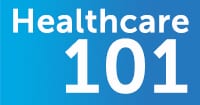Healthcare 101: What You Need to Know About Your EOB
September 17, 2014

It’s been a few weeks since you’ve made that trip to a PCP, ED, or urgent care center. You’ve all but forgotten about it when suddenly you see an envelope from your insurance company in your mailbox. What the heck is this thing? A bill? What does it mean? Not to worry – it’s not a bill. It’s your Explanation of Benefits, or EOB. Whether you’re new to having health insurance or you’ve been covered for years, you might be confused by what that EOB is all about.
First, you should know that an EOB is not a bill to be paid, even though it arrives after you receive any medical services and might have dollar amounts listed. This form only serves to show you how your insurance company (processed a claim on your behalf).
Second, you should pay close attention to the information to make sure that you’re getting the coverage you should. Between clinicians, hospitals and medical billing companies, mistakes can be made, so it’s important to know what your coverage should be and to compare that to what is being shown on your EOB.
Much of the information, like patient name and date of service, is self-explanatory, although you should double-check that these are correct. Let’s break down the EOB and walk through some often-overlooked parts. If you find a mistake or have a question about how a claim was paid, contact your healthcare provider and your insurance company as soon as possible to let them know about the error.
General Information
Insurance number:
This identifies you as the patient to both your insurance company and the healthcare provider. Make sure this matches what is on your insurance card.
Claim number:
This identifies the specific claim to both the medical facility and the insurance company. You’ll need to keep this number on hand if you have any questions for either party.
Type of service:
This will be a code, sometimes with a brief description, noting the treatment you received.
Charge:
This is the amount the healthcare provider billed your insurance company.
Not covered amount:
Take note of this. It is the amount that your insurance company did not pay to the provider. You should also see a code that denotes the reason the charge was not paid. If you’re unsure of what the code means, there is usually a glossary included somewhere on or attached to the EOB.
Total patient cost:
This is the amount you will be expected to pay taking into account coverage, deductibles, co-payments, coinsurance and your out-of-pocket requirements. Again, this is not a bill, so don’t pay anything based specifically on this document. You should receive a separate bill from the healthcare provider that should match your EOB.
What might cause surprises on an EOB?
Changes in health plans.
1) If you’ve recently changed jobs or moved to a new insurance provider, your healthcare provider might be slow to make the updates. Be sure that your claim is going to the correct insurer to help avoid any misunderstanding.
2) Employer-sponsored plans: Each year many employers change their insurance providers and / or types of plans. Sometimes this can create confusion for employees who visit the same healthcare providers but see their benefits change from time to time / each year. Copays, coinsurance, and deductibles can change from time to time even though you may be accustomed to a different payment amount in the past. Staying informed of any changes your employer might be making to your health plan will empower you with the info you need to make the best decisions for your health care and help avoid surprises.
Also important to note: if a change is made from a PPO to a high deductible plan, your insurance benefits will not kick in until the out of pocket deductible has been met.
